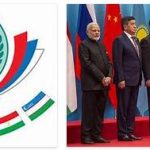SPOTLIGHT : The 2020 Summit took place from November 21-22 as a virtual meeting chaired by Saudi Arabia. Expectations were high, but so were the problems. The next summit will take place in Rome at the end of October 2021.
Background
According to HEALTHKNOWING.COM, the G20 is an informal group of 19 individual states and the EU as a whole, which was founded in 1999 by the finance ministers of the G7 in response to the Asian financial crisis at the end of the 1990s as an institutionalized forum for dialogue between industrialized countries and important emerging economies.
Objectives
Coordination processes and joint statements in the field of international financial and currency policy. According to the decision of the heads of state and government, the G20 has been the central forum for international economic cooperation since 2009.
Members (20)
The graphic shows the members of the G20, with four groups being differentiated by color and explained. You can find an overview of the members in the table at the bottom of the page.
G20 – World Ranking by Economic Potential 2019
The graphic shows the world ranking of the individual states represented in the G20, measured according to their nominal gross domestic product in 2019, in tabular form, as well as the membership overall in the same color as in the graphic above. The world ranking ranges from number 1 (USA) to number 37 (South Africa). If the global ranking also included organizations, the EU-28 would (still) be in second place in 2019.
G20 – Economic Performance Comparison 2019
The graphic compares the economic strength of the G20 members measured by their gross domestic product (GDP) in billions of US dollars in 2019. The global GDP in 2019 was around 87.750 billion, the G20’s total GDP was almost 75.100 billion. The G20’s share is around 86 percent of global economic output.
G20 – comparison of the population figures 2019
The graphic shows the population of the G20 members in millions for the year 2019. The world population was around 7,670 million, the total population of the G20 was around 4,820. The G20 members together represent around 63 percent of the world’s population.
Presidency
Each year on December 1st, a different member takes the presidency. The summit meetings of the heads of state and government take place annually. The G20 summit 2020 took place virtually in November with host Saudi Arabia. The 2021 G20 summit will be held in Rome at the end of October under the Italian Presidency.
Rule of thumb for G20
- 80 percent of global economic output
- 75 percent of world trade
- 60 percent of the world’s population
Note: The data on this website is based on the World Development Indicators of the World Bank as of July 1st, 2020 and shows the data status for 2019.
Comment
(1) The importance of the G20
The importance of the G20 increased considerably with the international financial crisis of 2008/2009. The G20 prepared the first two “world financial summits” (November 15, 2008 in Washington and April 2, 2009 in London). This shows that the correct approach of a more representative international grouping is still strongly finance-oriented.
In the medium term, this group of industrialized and emerging countries could complement the G7 / G8, or even replace it in the long term, and thus become an important forum for financial and economic policy issues. However: the more members, the greater the risk of fragmentation and the risk that clearly diverging interests make it more difficult to find a consensus.
(2) The economic strength of the group
Interesting findings include: The O-5, with the exception of Argentina (24) and South Africa (33), have long since penetrated the phalanx of the leading economic countries. World ranking for 2018: China (2), India (7), Brazil (9), Russia (11) and Mexico (15). The inclusion of South Africa (world rank 33 in 2018) as currently only the second strongest economic state in Africa after Nigeria in the group of the O-5 arises from the geopolitical consideration of having at least one African state “at the table”.
South Africa and Argentina (number 24) are the only two G20 countries that are outside the actual top 20. The places missing in the world ranking are predominantly occupied by European countries. If the global ranking included organizations, the EU would be in second place.
Among the emerging countries is Turkey (world rank 19), which, contrary to popular opinion, has the potential for an economically “booming” country – but began in 2017 with a significant setback with very high inflation rates. Note: There is no uniform definition of the terms “emerging market” or “emerging market”.
Table
members of the G-20
| Argentina Australia Brazil China Germany France Great Britain India Indonesia Italy |
Japan Canada Mexico Russia Saudi Arabia South Africa South Korea Turkey USA and the EU as a whole |









